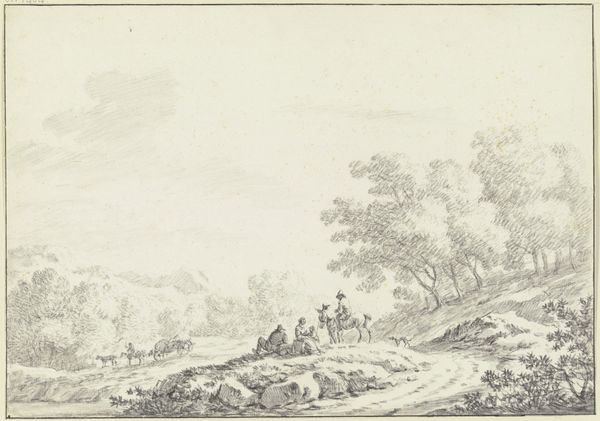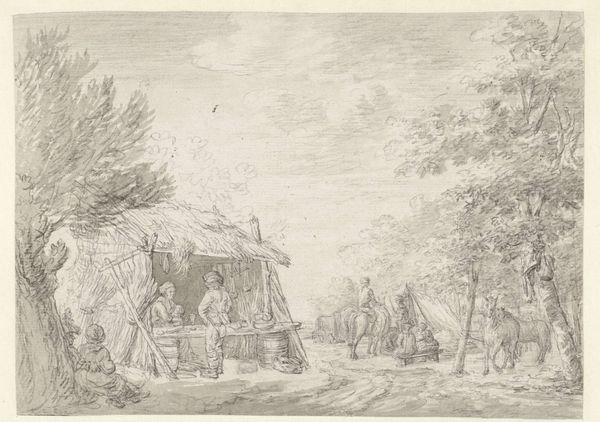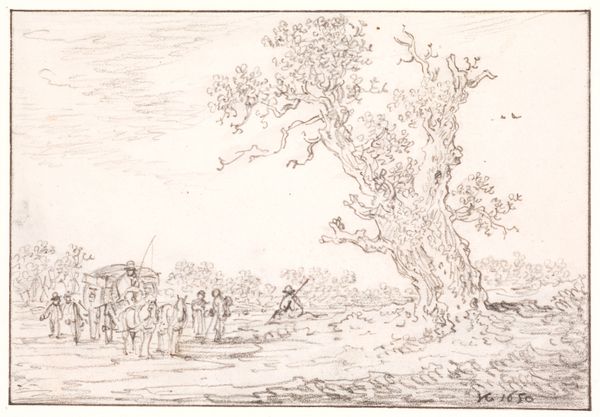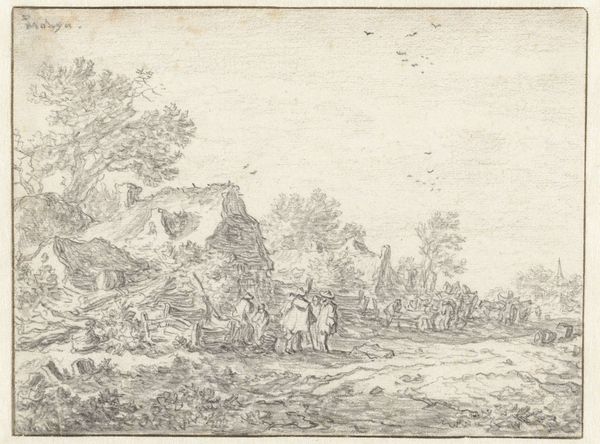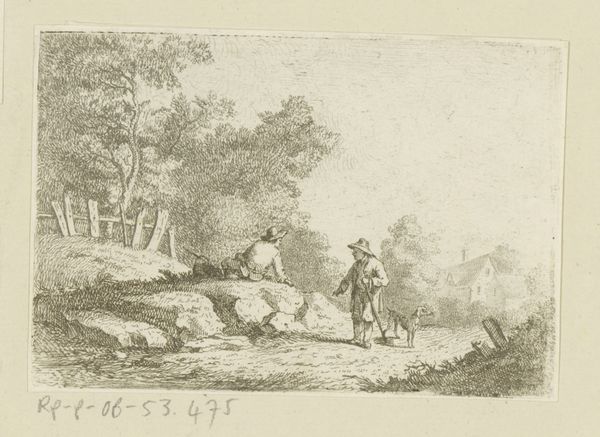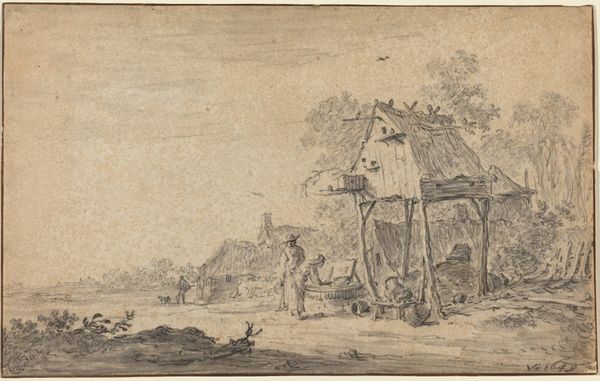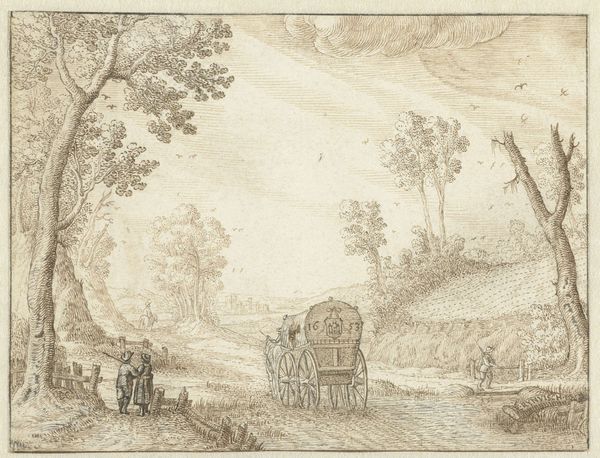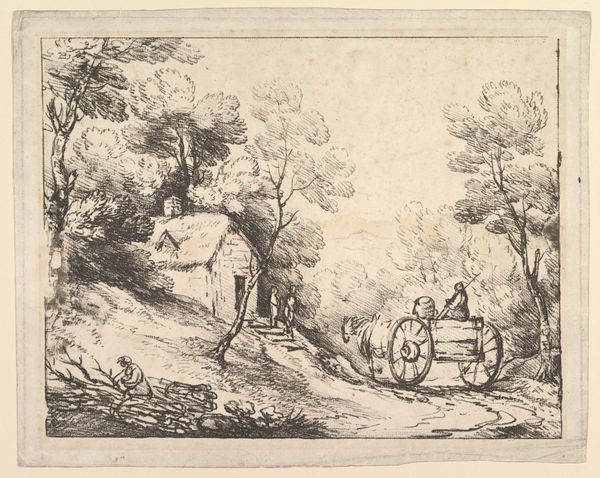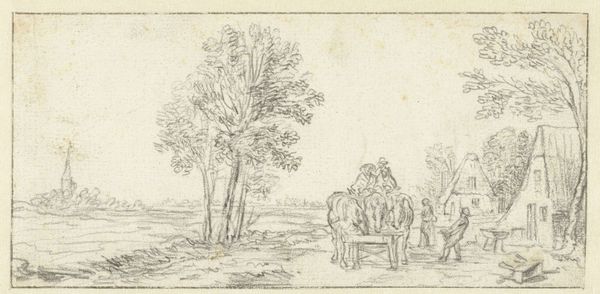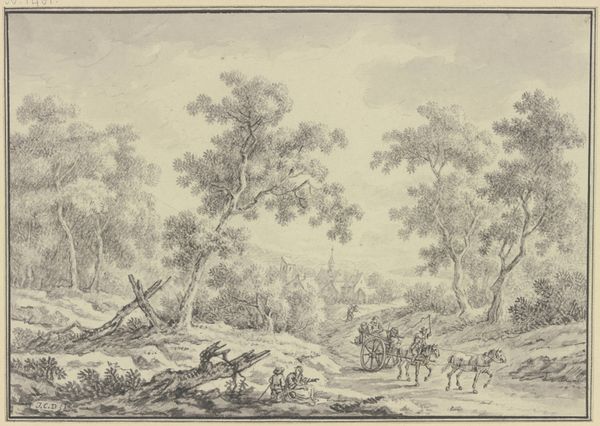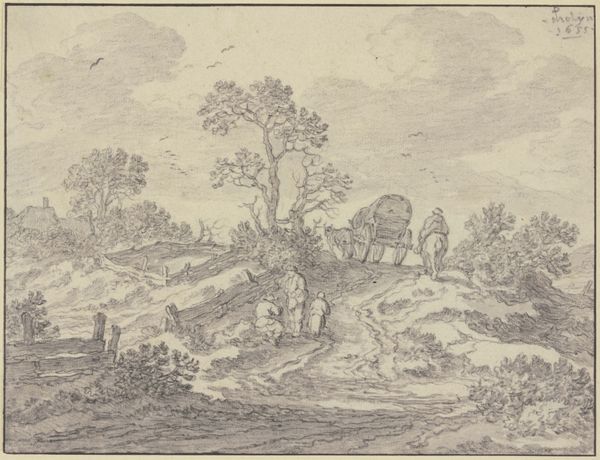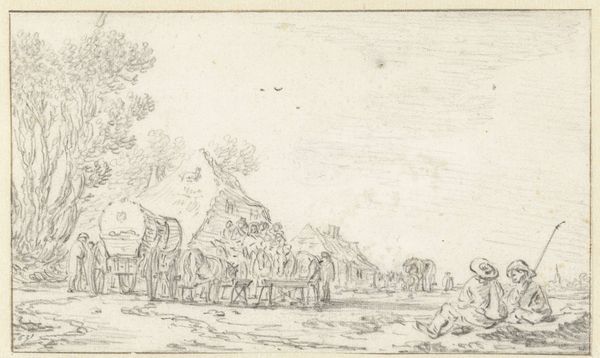
drawing, pencil
#
drawing
#
aged paper
#
toned paper
#
dutch-golden-age
#
pen sketch
#
pencil sketch
#
old engraving style
#
landscape
#
figuration
#
form
#
personal sketchbook
#
pen-ink sketch
#
pencil
#
line
#
pen work
#
sketchbook drawing
#
genre-painting
#
sketchbook art
#
realism
Dimensions: height 113 mm, width 195 mm
Copyright: Rijks Museum: Open Domain
Editor: So, this is "Vijf figuren rustend voor een boerenwoning," or "Five Figures Resting in Front of a Farmhouse," a pencil and pen drawing by Jan van Goyen from 1651. I’m really struck by the sort of casual intimacy of the scene; it feels like a candid snapshot of everyday life. What's your take on this work? Curator: What I find particularly interesting is how van Goyen subtly embeds commentary on Dutch society within these seemingly simple landscapes. It's easy to see this as a peaceful scene of rural life, but let’s think about who is resting here, and what kind of labor might they be engaged in. Can we read anything about the social dynamics from their posture and their proximity to each other? Editor: Hmm, that's a good point. They do seem like working-class people. You've got a family, maybe a traveler with a horse-drawn wagon...It's definitely not an aristocratic gathering. So you’re suggesting the image may subtly explore class distinctions? Curator: Precisely! Consider the rise of the Dutch Republic and its burgeoning merchant class. Van Goyen was acutely aware of the social fabric. By focusing on these 'ordinary' figures, he subtly acknowledges their role in the nation’s identity, challenging the dominance of aristocratic portraiture. This ‘resting’ is temporary. It acknowledges work. How does this reframe the idea of the Dutch Golden Age? Editor: I never really thought of landscapes as having such strong social commentary. Now I'm thinking about how these sketches might be humanizing the everyday person, which maybe pushes against traditional hierarchies? Curator: Exactly! It’s a window into the lives of those who were building the Dutch Golden Age, perhaps unseen in official histories. Now, do you see a similar recognition of working-class lives in other artworks from this period? Editor: I think I need to revisit my textbooks. Thanks! Curator: Likewise, this exploration truly opens our eyes to understanding the depth and purpose that lies within art, going beyond just face value.
Comments
No comments
Be the first to comment and join the conversation on the ultimate creative platform.

